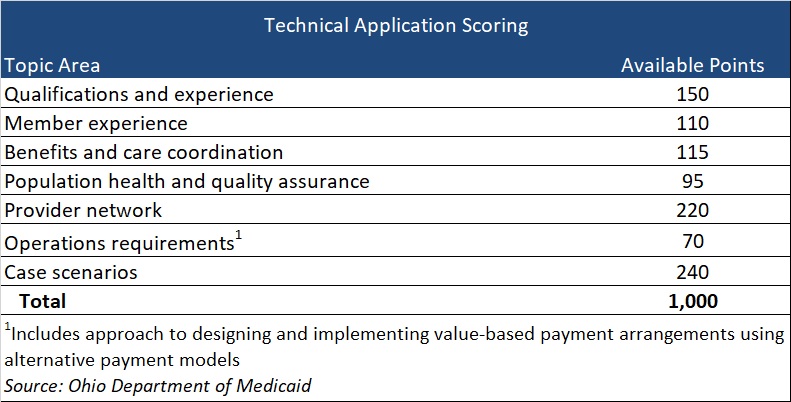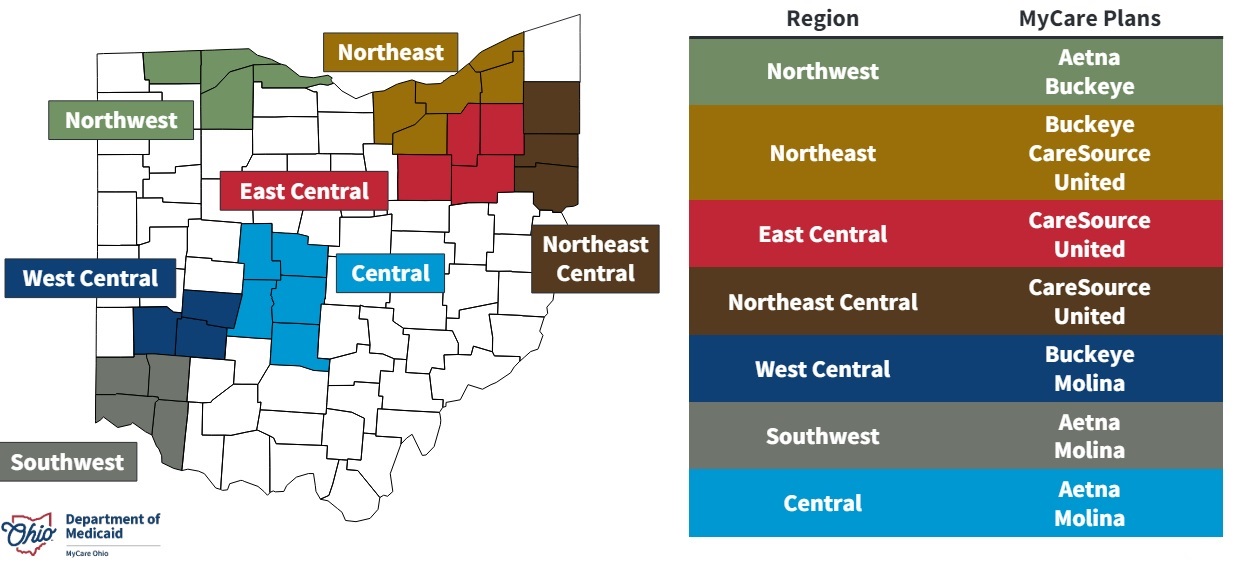Today’s blog is the next in our series highlighting significant developments in the Medicare program. In our first article we covered the Centers for Medicare and Medicaid Services’ (CMS) calendar year 2023 Medicare Physician Fee Schedule (MPFS) proposed rule. This week we are highlighting a few key policy developments in the proposed rule that governs payment levels and policy updates for hospital outpatient departments and ambulatory surgical centers (ASCs).
As we discussed last week, this is a pivotal moment for the Biden Administration’s Medicare policy agenda. Because the rulemaking cycle takes about 18 months, CMS needs to begin the process of collecting input on new proposals this year if it intends to finalize proposals before the end of the President’s first term. Additionally, the CY2023 rule represents an important transition year for CMS as it navigates the COVID-19 related anomalies in the data used to calculate payment levels.
Health care plans, providers, and facilities are continuing to transition to value based payment strategies, making it increasingly important to assess the entire environment of Medicare payment rules as these payment systems are the basis of financial benchmarks, quality incentives, and other key components of value-based payments. In addition, these payment rules provide insight into the cost pressures, incentives, and areas of misalignment throughout the health care system.
HMA experts are analyzing and closely tracking several issues in the CY 2023 hospital outpatient prospective payment system (OPPS) proposed rule. A brief summary of some of the most important proposed policy changes for the outpatient hospital setting are included below and highlight many of the Administration’s top health care priorities.
- Policies to sustain access and address health disparities in rural communities.
- Enhancing Medicare’s behavioral health payment and access policies beyond the COVID-19 public health emergency.
- Uncertainty in the hospital outpatient prospective payment system (OPPS) rate increase due to future implementation of changes in 340B payment.
- Increasing transparency of consolidation and mergers in the marketplace to help advance quality and affordability.
The remainder of our post delves into these issues and other notable proposals. Our post also includes analysis of the implications of these policies for stakeholders deserving.
Key Action Items for Stakeholders
The CY 2023 OPPS Proposed Rule was published on July 15, 2022, and all comments from stakeholders are due to CMS by September 13, 2022. We anticipate CMS will release their Final Rule in late fall 2022, before the new rules are implemented January 1, 2023.
The public comment period is also an important window of opportunity during which stakeholders can analyze the impact of CMS’s proposed policies, assess the proposals against other applicable pending federal and state payment policies, and consider how the proposals may impact business decisions. Further, the public comment period is essential for CMS to deepen its understanding of the impact of its policies on stakeholders. The agency benefits from hearing stakeholder’s perspectives, viewing their quantitative and legal analyses, and understanding the general stakeholder environment.
Rural Emergency Hospitals: Definition and Payment
The Consolidated Appropriations Act of 2021 (CAA) established a new provider type called Rural Emergency Hospitals (REHs) beginning in 2023. REHs are facilities that convert from either a critical access hospital (CAH) or a rural hospital with less than 50 beds, by choosing to close their inpatient capacity. Instead, these facilities provide emergency department services, outpatient services, post-hospital extended care services, and other defined services.
While the statute specifies many foundational aspects of REHs, CMS was given the authority to further define REH eligibility status and to specify the unique reimbursement mechanisms for REHs. All of these components will be vital to a provider or entity’s decision to pursue REH status.
On June 30, CMS released the first component: Conditions of Participation (CoPs) for REHs, which defined REH status within the Medicare program. Within the CY 2023 OPPS Proposed Rule CMS proposed to define reimbursement and several other key components of REHs. Below we detail the key elements of REH reimbursement. In HMA’s blog next week we will offer greater detail on the COP and reimbursement policies.
REH policies proposed in the CY 2023 OPPS Proposed Rule:
- REHs will receive a monthly facility payment of approximately $268,000 (or more than $3 million per year) beginning in CY 2023.
- REHs will receive a 5 percent payment increase for all services covered under the Medicare OPPS.
- REHs may provide outpatient services that are not otherwise paid under the OPPS (e.g., the Clinical Lab Fee Schedule) as well as post-hospital extended care services furnished in a unit of the facility that is a distinct part of the facility licensed as a skilled nursing facility (SNF).
- Beneficiaries served at REHs will not be charged a copayment on the additional 5 percent OPPS payments, but standard OPPS cost-sharing requirements would still apply.
- REHs must comply with all applicable provider enrollment provisions in order to enroll in Medicare.
- REHs will have a unique quality reporting program distinct to REHs, in order to reduce reporting burden on these smaller facilities. CMS seeks feedback from stakeholders on the measures used for the REH quality reporting program.
- REHs will be provided an exception from the Physician Self-Referral Law (commonly known as the “Stark Law”).
Takeaway: The creation of REHs is both a significant change for the Medicare program and potentially a unique opportunity for small rural hospitals and health systems which own/operate rural hospitals. The Congress and CMS believe this model will address access to care concerns and health disparities present in rural communities. Many assert that under the REH approach, hospitals and health system providers serving rural communities may have greater flexibility to support the rural communities they serve.
Look for our additional analysis of the set of proposed REH policies next week.
Mental Health Services Furnished Remotely by Hospital Staff
For CY 2023, CMS proposes several updates to its remote services policy to plan for a transition from temporary policies enacted during the PHE to when the PHE is declared over. CMS proposes to:
- Allow clinical staff of a hospital to conduct remote mental health and substance abuse services and to designate these services as hospital outpatient department services for purposes of reimbursement. Patients will be permitted to be in the homes and hospital clinical staff must conduct the service from inside the hospital facility. Further, CMS proposes new hospital outpatient codes for these services, and CMS will not permit these outpatient services to be conducted (and billed) in tandem with physician fee schedule services.
- The agency will require an in-person service within 6 months prior to the initiation of the remote service and then every 12 months thereafter. CMS will allow exceptions to the in-person visit requirement based on beneficiary circumstances.
- The agency is also proposing that audio-only interactive telecommunications systems may be used to furnish these services when the beneficiary is not capable of, or does not consent to, the use of two-way, audio/video technology.
Takeaway: As CMS wrote in the proposed rule, many beneficiaries may be receiving mental health services in their homes from hospital or critical access hospital staff during the COVID-19 PHE. The policy update could help minimize disruptions in continuity of care that might otherwise occur following the end of the PHE. The proposals also reflect CMS’ desire to adapt to changing beneficiary preferences and new methods of providing services that have evolved during the COVID-19 PHE.
Hospitals and health systems may benefit from these proposals because it will maintain and expand patient-provider access points and care coordination after the patient has left the hospital. Stakeholders will need to continue to assess beneficiary utilization of services furnished remotely, potential staffing changes to support these services, and community-specific access needs for remote mental health services. Stakeholders may have important perspectives to offer CMS through the regulatory comment proceed as the agency determines whether to finalize a requirement that hospital clinical staff be physically located in the hospital when furnishing services remotely using communications technology.
Payment Policies
CMS is proposing to update OPPS payment rates for hospitals and ASCs that meet their respective applicable quality reporting requirements by 2.7 percent. This update reflects the following factors:
- Projected hospital market basket percentage increase of 3.1 percent; and
- A 0.4 percentage point reduction for projected multifactor productivity.
In the context of the OPPS, CMS proposes to increase the OPPS conversation factor by 2.7 percent from CY 2022 to CY 2023, from $84.18 to $86.79. CMS estimates this will increase OPPS payments to providers from CY 2022 to CY 2023 by $1.8 billion.
In the context of ASCs, CMS estimates a proposed increase to the ASC conversation factor by 2.7 percent from CY 2022 to CY 2023, from $49.91 to $51.31. CMS estimates this change will increase industry-wide payments from CY 2022 to CY 2023 by $130 million. In addition, CY 2023 is the final year in which CMS will apply the productivity-adjusted hospital market basket update to ASC payment system rates for an interim period of 5 years (CY 2019 through CY 2023).
Consistent with CMS’s methods for updating other Medicare prospective payment systems during the 2023 regulatory cycle, the agency proposes to use claims data from CY 2021 and hospital cost report data from the June 2020 Healthcare Cost Report Information System (HCRIS) to update payment rates for CY 2023. Some stakeholders have expressed concern during this regulatory cycle that claims data continue to include anomalous trends influenced by covid cases and the cost data do not accurately reflect covid-related costs because the data primarily are associated with pre-COVID time period.
340B Payment Policy
CMS’s proposed rule acknowledges the recent Supreme Court decision in American Hospital Association v. Becerra (No. 20-1114, 2022 WL 2135490), which will have a significant impact on the 340B program. However, given the recency of this decision the agency formally proposed to maintain the current payment rate of Average Sale Price (ASP) minus 22.5 percent for drugs and biologics acquired through the 340B program.
In response to the decision, CMS stated that the agency will adjust 340B payment rates within the CY 2023 final rule. In its recent ruling, the Supreme Court held that HHS may not vary payment rates for drugs and biologicals among groups of hospitals without having surveyed hospitals’ acquisition costs. The decision relates to payment rates for CYs 2018 and 2019 but has implications for the CY 2023 rates.
CMS also stated that it anticipates applying a 340B payment rate of ASP plus 6 percent for specified drugs and biologics in the CY 2023 final rule. This would likely result in a budget neutrality reduction approaching 5% in the OPPS conversion factor.
Takeaway: Hospitals and federally qualified health centers (FQHCs) receiving 340B reimbursements will view the court ruling and potential increase to 340B payment rates as positive. However, it remains unclear at what exact level 340B payments will be set. Therefore, stakeholders may want to comment on the CY2023 policy options CMS is considering. Additionally, stakeholders should plan for CMS to conduct a survey of acquisition costs as it considers newly proposing changes to the payment rates. It remains possible that CMS will continue to apply the 340B cut for 2023 in light of a 2020 survey of hospital acquisition cost that it conducted. Future budget neutrality adjustments may also be necessary for any payments that are returned to hospitals due to the overturning of the 340B cut for 2018 and 2019.
Additional Issues for Stakeholder Consideration
In addition to the financing and policy issues discussed above, the wide-ranging rule contains numerous other policy proposals with direct and indirect implications on Medicare providers, beneficiaries, and other stakeholders. Table 1 provides a snapshot of some of the issues that warrant further consideration.
Table 1. Other Notable Proposed Changes Impacting Health Care Providers and Stakeholders
| Topic | Summary |
| Provider Transparency | CMS issues a request for information linked to the President’s July 2021 Executive Order (E.O.) on Promoting Competition in the American Economy. CMS currently manages a database of nursing homeowners and operators, and the agency has begun to leverage that data to support hospital and nursing home patients and their families. The agency solicits feedback on whether it should release additional data that is already being collected “to help identify the impact of provider mergers, acquisitions, consolidations, and changes in ownership on the affordability and availability of medical care.” CMS also invites comments on whether the agency should release similar data for other types of providers. The solicitation represents the next phase in CMS’ expansive portfolio of work to address the impact of market consolidation on health care prices, consumer costs, and quality in the healthcare industry writ large. Medicare providers and stakeholders should be tracking how federal health care regulators, including CMS, are working to respond to the E.O. There is a strong likelihood that CMS will begin to include data on other types of providers and stakeholders will need to understand this shifting landscape and how it could impact their current and potential future business decisions. |
| SaaS | CMS discusses its desire to address the novel and evolving nature of Software as a medical Service (Saas) procedures. The agency is seeking comments on the specific payment approach we might use for these services under the OPPS as SaaS-type technology becomes more widespread. We are also concerned about the potential for bias in algorithms and predictive modeling, and are seeking comments on how we could encourage software developers to prevent or mitigate the possibility of bias in new applications of this technology. |
| Inpatient Only List | Removes ten services from the Inpatient Only (IPO) list.While the IPO list has previously been targeted for major reforms, this year’s narrower set of proposed changes signal CMS’ is deprioritizing IPO list reform. |
| Payment for surgical N95 Respirators | CMS recognizes that hospitals may incur additional costs when purchasing domestic NIOSH-approved surgical N95 respirators. CMS is proposing payment adjustments under the IPPS and OPPS that would reflect, and offset, the additional marginal resource costs that hospitals face in procuring domestically made NIOSH-approved surgical N95 respirators. Under this proposal, these payments would be provided biweekly as interim lump-sum payments to the hospital and would be reconciled at cost report settlement. The rule outlines the information providers need to include on the cost report to determine payments for cost reporting periods beginning on or after January 1, 2023. |
| Ambulatory Surgery Centers | CMS requests stakeholder feedback on methods that could be implemented to collect cost data from ASCs that minimize reporting burden.This could be the beginning of a process to implement cost reports for ASCs. |
The HMA Medicare team will continue to analyze these proposed changes. We have the depth and breadth of expertise to assist with tailored analysis, to model policy impacts, and to support the drafting of comment letters to this rule.
















